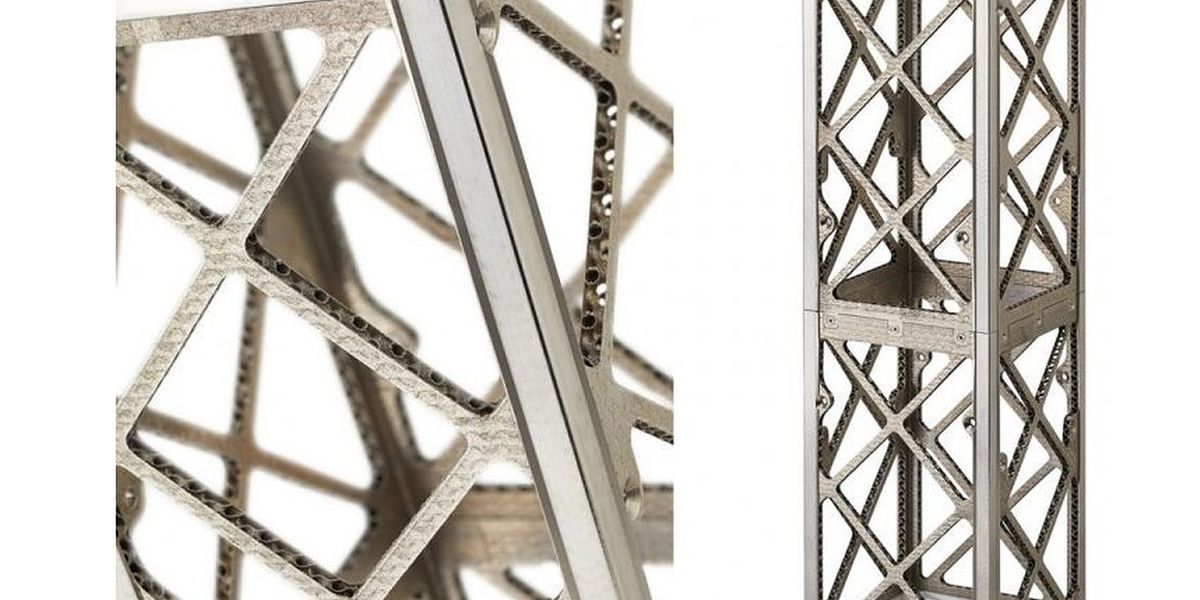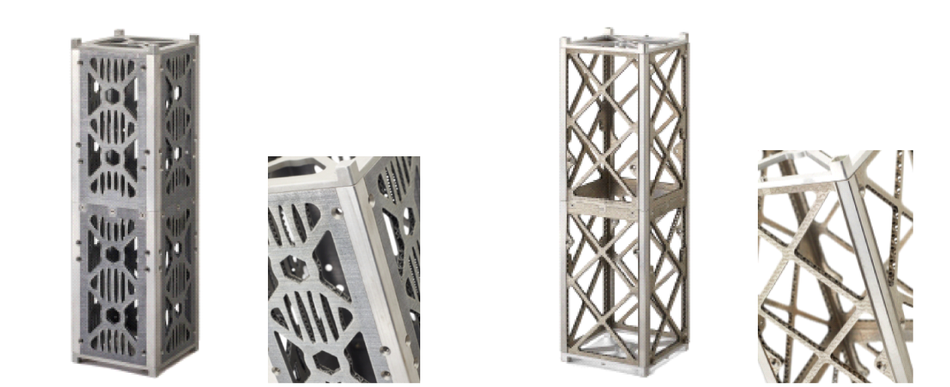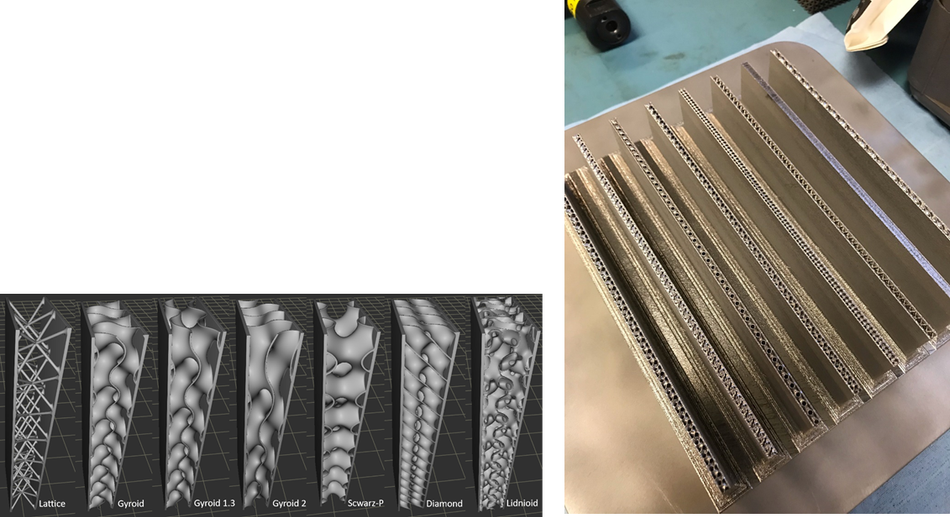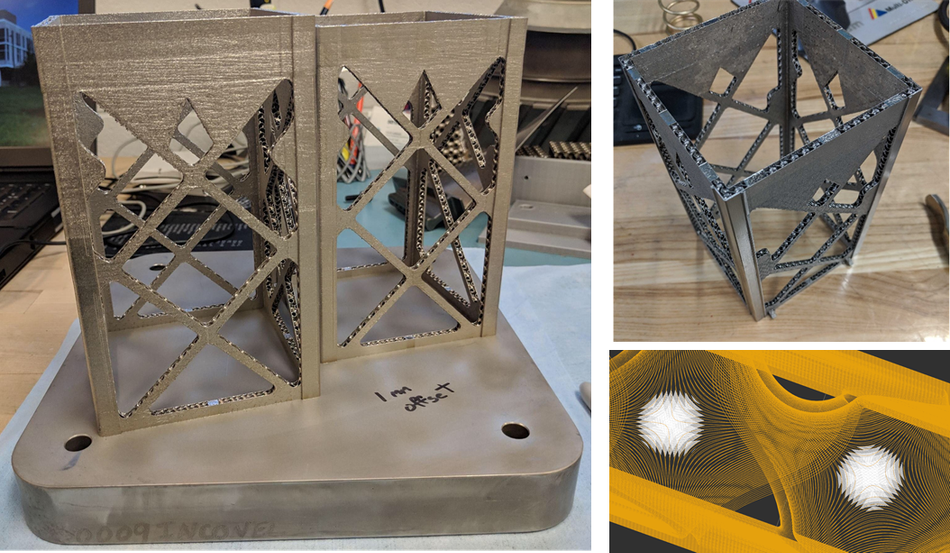US Air Force Optimizes CubeSat using Architected Materials

The U.S. Air Force Institute of Technology (AFIT) leveraged nTopology and architected materials to develop an additively manufactured CubeSat bus assembly from Inconel 718 that was 50% lighter and 20% stiffer than the original aluminum assembly.
This article was first published on
ntopology.comIntroduction
In the precision-driven field of space operations, the ability to rapidly respond to constant, progressive advancements is essential to meet the demands of evolving technologies. Space satellites require materials with superior stiffness to weight ratios to provide structural integrity while minimizing mass.
CubeSats are small and relatively inexpensive satellites used for research and communications by government and private agencies. CubeSats enable the concept of ridesharing; a means to launch several satellites grouped on a single structural chassis or bus to counteract the high cost of sending a payload into orbit. Some 1350 CubeSats have been launched as of January 2021. Applications of these satellites include Earth observation, amateur radio, scientific experiments, and more.
Researchers at the U.S. Air Force Institute of Technology (AFIT) leveraged the advanced engineering design capabilities of nTopology to redesign the CubeSat bus for metal Additive Manufacturing. Leveraging architected materials they increase the stiffness of the bus while reducing its weight, part count, and delivery lead time.
“Leveraging a computational, architected materials approach, this primary mechanical structure can be made lighter, stronger, and quickly re-sizeable to accommodate specific satellite loads.”
Ryan O’Hara, Director of Aerospace and Defense at nTopology
The Design Challenge
The structural bus forms the backbone of the satellite and provides the basic infrastructure necessary for the satellite to function. The physical modularity of the bus and payload system allows for a small satellite to be easily configured.
However, manufacturing the CubeSat bus structure using traditional machining processes is a time-consuming process. The assembly includes nearly 150 parts. This large number of components creates 150 potential failure points, bumping the costs for quality control in this mission-critical application.
The large assemblies also add another significant process expense. Satellite integrators are forced to use high-failure fasteners and complex assembly processes to prevent joints from loosening during operation.

The goal of the CubeSat project was to create a structure that could fulfill all CubeSat bus design requirements and still be manufactured using a repeatable process. The engineering team utilized several critical technologies to produce a CubeSat rapidly manufactured with metal additive manufacturing systems and driven by nTopology and its implicit modeling engine.
nTopology provided a computational modeling environment that enabled the engineering team to create lightweight and optimized parts with functional requirements built directly into the model.
Critical to the reduction in weight for this CubeSat bus was the use of a high stiffness thin-walled structure capable of meeting the launch and payload delivery engineering requirements. These highly optimized honeycomb-like, gyroid-based lattice structures are only manufacturable using 3D printing technologies.
Architected Materials for Lightweighting
Architected materials are periodic lattices with closely controlled geometry that is optimized for a specific function. With architected materials, we can achieve previously unattainable material properties combinations and design structures with a targeted physical response. nTopology’s implicit modeling technology provides engineers with the necessary level of control for developing these advanced structures.
The R&D team explored multiple thin-walled TMPS and strut-based lattice structures and assessed their performance using engineering simulation software. After several iterations, the team identified a design based on Inconel 718 (a nickel-based superalloy with 3x the density of aluminum) with a superior stiffness-to-weight ratio than bulk aerospace-grade aluminum and a lower coefficient of thermal expansion.

This nickel superalloy has a higher density than the aluminum alloys traditionally used in satellite chassis. One of the main reasons the team opted for this manufacturing material is that current metal Additive Manufacturing systems can produce much finer features with Inconel718 than aluminum alloys.
The final structure uses a shell and gyroid infill with a wall thickness of 250 microns. The result was a chassis with half the weight of a similar aluminum alloy design with a 20% increase in stiffness.
Direct From Design to Manufacturing
A practical limitation of manufacturing parts that use architected materials is the sheer size of the resulting mesh file. STL files have historically created significant speed bumps to production in AM systems.
Using nTopology’s direct-to-manufacture capabilities, the team bypassed the need to generate STL files. Instead, they created slices and tool paths directly in the design software. nTopology’s Direct-To-Manufacture capabilities made it possible to realize the production of the CubeSat. This direct in-software slicing capability produced a manufacturing output with an unprecedented level of control and bypassed the bottlenecks related to meshing quality.

The final key enabling technology associated with the new CubeSat bus design was Laser Powder Bed Fusion. Upon completion of the design, the prototype CubeSat bus was manufactured using a Concept Laser M2 system.
A 3D printed and finished CubeSat was ready for testing in only 3.5 business days. The structural bus was then evaluated and certified, meeting the requirements for launch using a shaker table and NASA GEVS launch profile certification methodology.
The Next Steps
With a short delivery time, it is now possible to produce a CubeSat structural bus that aerospace engineers can easily reconfigure based on changing satellite mission requirements. Coupling modularity with increased stiffness and lower weight, this rapid manufacturing capability represents a revolutionary step forward for the satellite design community.
In this case study, a 3U CubeSat was used for demonstration purposes. The researchers of AFIT are now investigating the use of larger 3D printing systems to manufacture larger satellite systems with 6, 12, 27, or more units. The ability to design and rapidly manufacture such advanced structures is transferable to various other aerospace and industrial applications.
Learn more about nTopology
Would you like to learn more about how you can use nTopology to develop complex device designs for your organization and why leading companies in the aerospace, automotive, medical, and consumer goods industries rely on it? Request a demo, and our nTop experts will get back to you promptly.
This article was first published on the nTopology blog.